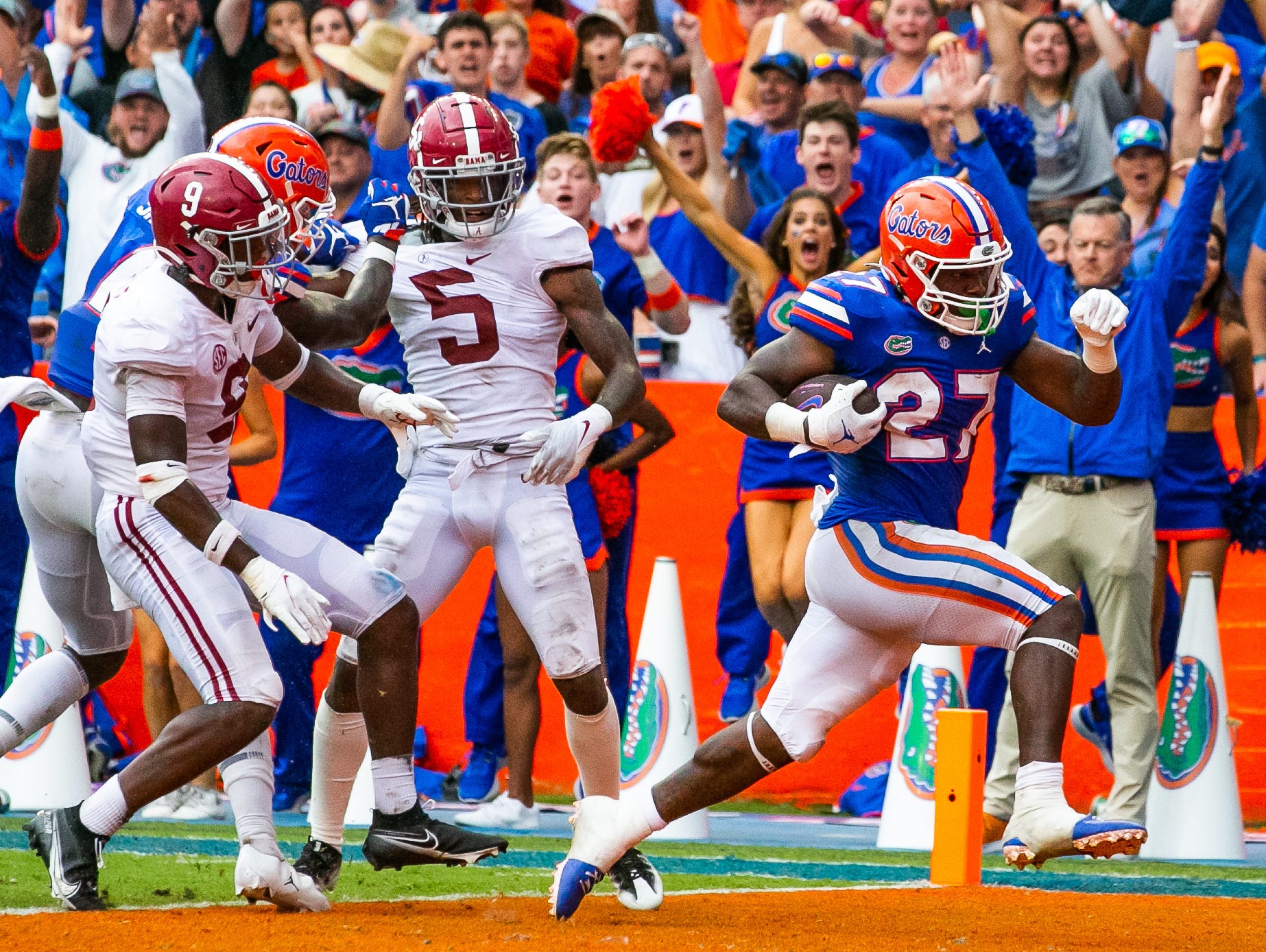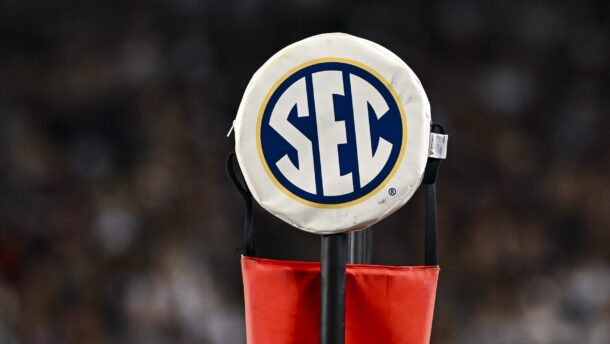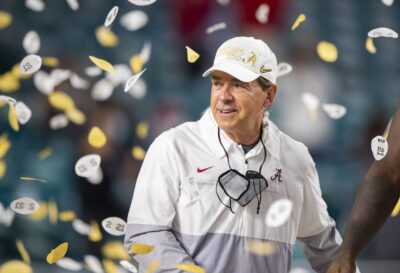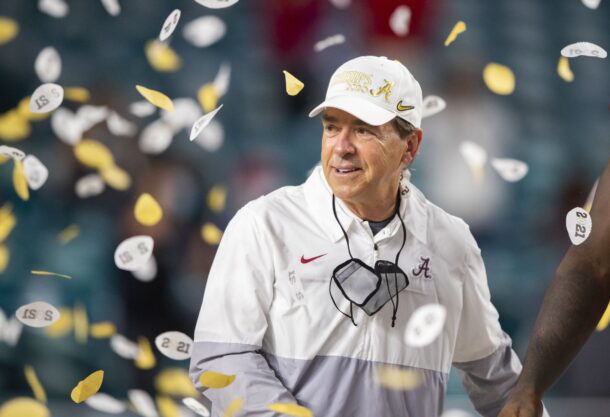
Extra Points: SEC, not the Alliance, will determine Playoff expansion format
By Matt Hayes
Published:
Each week, college football insider Matt Hayes tackles the biggest topics in the game, in and around the SEC:
SEC still wields the power
We’ve hit the delay portion of a potential expansion of the College Football Playoff. Key word: potential.
Because despite the narrative that the alliance of the Pac-12, Big Ten and ACC can push through their format preference, nothing could be further from the truth.
The SEC, suddenly the big, bad boogeyman because it opened arms when Texas and Oklahoma inquired about joining the conference, still wields a heavy stick in the process.
And they’re not budging.
One SEC source told me there are “10 different ideas in that room” and the biggest issue is trust among the group.
But the idea of “The Alliance” directing or changing the format of the 12-team Playoff that was seemingly a lock for approval before SEC expansion, quickly evaporated early in the meeting.
Why? Two simple reasons:
— First and foremost, the SEC is good with status quo. Commissioner Greg Sankey told me last month, “The current format works, and we believe will continue to work moving forward.”
The SEC has that hammer in negotiations because the addition of Texas and Oklahoma increases the league’s ability to generate revenue. The Big Ten is the only other conference that can generate similar revenue.
— Any move off the original 12-team format from the working group would have to include all at-large invitations. One SEC source told me the league will take an 8-team format, but any talk of automatic qualifiers within that format makes it “a dead issue.”
Understand this: The CFP won’t expand unless it’s a unanimous vote among the presidential representatives from the 10 FBS conferences and Notre Dame president John Jenkins. They don’t need a unanimous vote, but presidents don’t want public bickering to overshadow any expansion.
“There are a lot of hurt feeling in that room,” one Group of 5 athletic director told me. “But at the end of the day, my guess is we’ll get to the (12-team format) that was initially proposed. Everyone wins there, and there are no issues with (Group of 5) access.”
The good, the bad, the Noles
Florida State is at a dangerous point in the tenure of coach Mike Norvell.
An average Louisville team arrives in Tallahassee this weekend, and FSU has gotten progressively worse over the course of the first 3 weeks of the season.
Norvell is 3-9 in 12 games at FSU (3-6 in Year 1 last year), and needs to finish this season by winning 6 of his last 9 games to reach Willie Taggart’s 21-game total at FSU (9-12).
Taggart was fired in 2019 amid a dysfunctional mess on the field, and with losses mounting. This FSU team is losing, and the product on the field might be worse than what Taggart’s teams delivered.
“I just broke down that game, and it’s not pretty,” an NFL scout told me. “I never thought I’d see the say when Wake Forest had better players than FSU.”
FSU has the No.10 recruiting class in the nation, including a commitment from the consensus No. 2 player in the nation, CB Travis Hunter. But as the losses mount, the class could begin to fall apart.
Small steps for Pac-12
George Kliavkoff has made big strides in the early months since being named commissioner of the Pac-12.
The league has secured marketing deals and been proactive in promoting the brand, and the overall platform has been raised because of Kliavkoff’s aggressive moves.
But those moves can go only so far. At some point, the Pac-12 must put a better product on the field. Oregon’s win at Ohio State and UCLA’s over LSU were significant, but the remainder of the Pac-12 nonconference schedule has been brutal.
BYU has 3 wins over Pac-12 South Division teams (Arizona, Arizona State, Utah), the Pac-12 is 3-6 vs. Power 5 leagues, has 8 losses to Group of 5 teams and 2 losses to FCS schools.
Now USC, the marquee team in the Pac-12, is looking for a coach after Clay Helton was fired 2 weeks into the season. UCLA’s quick start got knocked sideways with a loss to Fresno State, and blue-blood Washington has ugly losses to Montana and Michigan.
No “alliance” will compensate for those failures on the field. Nor will the strong early work done by Kliavkoff.
Taking the lead
The first round of pay-for-play became official Thursday afternoon, when the SEC announced it would allow member institutions to provide players education-based benefits up to $6,000 per year.
Expect the remainder of the Power 5 conferences to quickly follow suit. The move by the SEC is a clear recruiting advantage. You better believe all 14 member institutions will give players the full amount.
More pressing for the rest of the Power 5 and the Group of 5 leagues: How quickly does the $6,000 minimum increase?
“Only a matter of time,” said one SEC athletic director. “We all know that.”
This is where the expanded Playoff becomes a critical factor for college football. The more the minimum for education-based benefits increases, the more pressure on FBS schools to keep pace.
The easiest way to increase revenue outside of individual conference media deals is the Playoff. An 8-team Playoff doesn’t have near the payoff of a 12-team Playoff.
Matt Hayes is a national college football writer for Saturday Down South. You can hear him daily from 12-3 p.m. on 1010XL in Jacksonville. Follow on Twitter @MattHayesCFB







